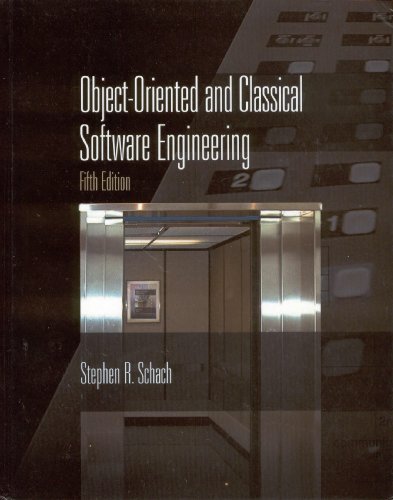Synopsis
This book is designed for an introductory software engineering course, and gives an excellent introduction to software engineering fundamentals, covering both traditional and object-oriented techniques. Its unique organization and style make it excellent for use in a classroom setting. The underlying software engineering theory is presented in part 1 and followed up with the more practical life-cycle material in part 2. In this edition, more practical material has been added to help students understand how to use what they are learning. This has been done through the use of "How To" boxes and greater implementation detail in the case study. Also, the new edition contains the references to the most current literature and includes an overview of extreme programming. The website in this edition will be more extensive, including solutions, powerpoints that incorporate lecture notes, newly developed self-quiz questions, and source code for the term project and case study. There is new coverage on ISO/IEC 12207 and a new section on extreme programming. The fifth edition of the book is language independent. All of the code examples are in pseudocode and complete implementation of the case study is given in both C++ and Java. Schach now gives more emphasis to teams by giving the topic its own chapter.
From the Publisher
Up-to-Date (material on UML, patterns, frameworks, software architecture, SPICE, synchronize-and-stabilize model, OLE, COM, CORBA, etc.)
Balanced coverage of the object-oriented paradigm with the classical paradigm (found throughout the book)
Unified Modeling Language (UML) used throughout for object-oriented analysis and design and wherever diagrams depict objects and their interrelationships.
New coverage of design patterns included in a new chapter on reuse, portability and interoperability (Ch 7)
New Emphasis on Team Work (Chapter 4 and in Term Project at end of each chapter)
"About this title" may belong to another edition of this title.
